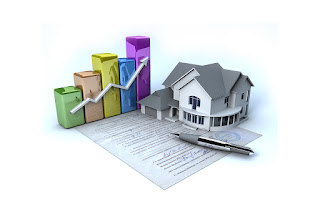Commercial property valuation: how does it work?

Every commercial property has value, but how can you know how valuable it is? Commercial property valuation may be difficult to estimate precisely, and it necessitates a thorough understanding of everything that influences, has influenced, or will affect the real estate value.
What does it mean to valuate commercial property?
The determination of how much value is held in buildings or land that will be utilized for business or leased by investors to tenants in commercial property valuation. This assessment should be fair and carefully examined by Commercial Real Estate (CRE) evaluators. Therefore, a significant deal of work must be put into maintaining its validity.
Determined the Commercial Property Valuation:
Commercial property values are influenced by a variety of factors that might be difficult to assess. Appraisers use one of three approaches to determine the value of commercial real estate:
Sales Comparison Approach:
This strategy employs recent sales data from comparable properties in the same market region (sometimes referred to as comparable). This is the most common method for valuing residential homes, but it is less common for commercial buildings, which investors frequently require for their revenue potential.
Cost Approach:
This method assumes that consumers would only pay as much for a building as for a similar empty lot in the region, plus profit for taking the risk of developing it. Appraisers must include the current cost of the land, construction, various building components, and depreciation when determining the value of a property.
Income Approach:
This approach forecasts how much money a business property will make in the future. When evaluating the property’s worth, appraisers must estimate yearly future gross income, collection and vacancy losses, annual operating expenditures and net operating income, and the rate of return or capitalization rate.
The kind of property being evaluated, the availability and accuracy of the information, and the aim of the commercial property assessment all influence which of these or other methodologies to apply, such as the Gross Rent Multiplier (GRM).
An appraisal’s central question is: how would a typical buyer do due diligence?
Typically, one or more methodologies are used, and reconciling the data into a final value determination. That necessitates a professional real estate appraiser with extensive expertise.
Which Approach Is Most Appropriate?
While there is no correct method for commercial real estate appraisal, each method has advantages and disadvantages. When you have enough recent sales, the Sales Comparison method works effectively. On the other hand, a lack of comparable or similar comparisons makes this technique problematic. This is more likely to occur in smaller markets or with assets that don’t sell frequently. Another downside of this strategy is that it fails to account for vacancies, missed rentals, unanticipated repair expenditures, and other unanticipated expenses.
If you can’t discover enough comparable, the Cost Approach may be useful for appraisal. The Cost Approach has flaws. For the most part, it does not include the property’s revenue when determining its value. It also ignores the selling price of similar properties, unlike the Sales Comparison technique.
The Income Approach is a practical way to employ if you can’t use the Sales Comparison or Cost approaches. It assists in making the quality of a commercial real estate investment by displaying the expected revenue over a period. However, its accuracy is highly dependent on the property’s predictable costs and income. Like the Sales Comparison technique, the Income Approach does not account for unforeseen future repairs, potential vacancy, or lost rent due to tenant delinquency. However, as we’ve seen, you may combine any of these approaches to assess a property better precisely. Along with discounted cash flow being the most often utilized and most dependable.



